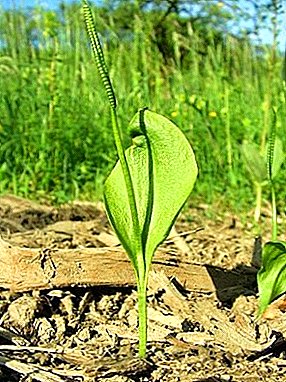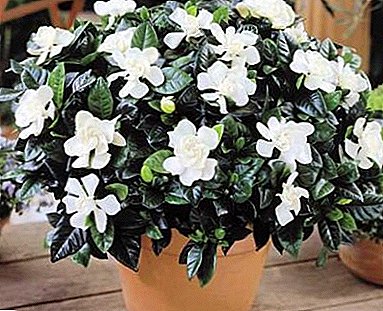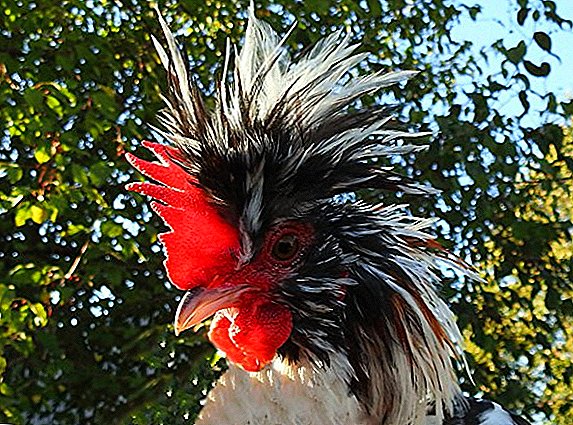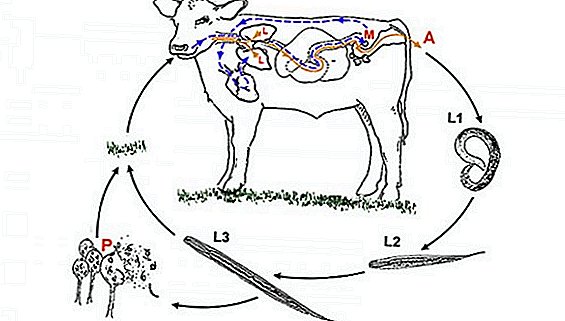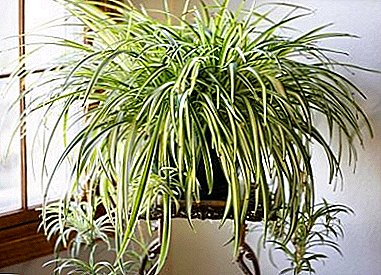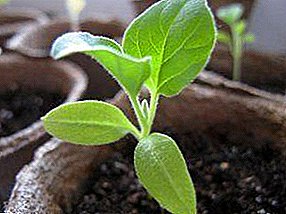
Eggplant is a popular vegetable that is grown in a seedling way.
The condition of adult plants and their yield depends on how strong, strong and healthy will be the seedlings.
Caring for it is not difficult, but you should consider some important points specific to this culture.
The subject of today's article is eggplants: planting and caring for seedlings, how to care for eggplant seedlings at different stages of growing?
The necessary conditions
For successful growing seedlings it is important to prepare the right ground. Eggplants are demanding to the soil, it should be light, nutritious, not too acidic.
It is not recommended to use purchased soil mixtures, they are poor in nutrients.
Among the most popular:

- humus mixed with turf ground and mullein;
- peat and sawdust;
- a mixture of peat with humus or garden soil.
Soil need to sift and calcined in the oven. As a disinfection possible spillage of the solution of potassium permanganate. To restore the lost useful microflora will help special formulations that can be purchased in stores for gardeners.
In any soil mixture, you can add mineral fertilizers, for example, potassium salts or superphosphate. Mineral complexes are excellent substitutes for wood ash.
Seeds for planting are carefully sorted, disinfected and processed by a growth stimulator.. Soaking in warm water is recommended. Swollen seeds are sown in containers, cassettes or paper cups. Peat pots do not use. Read more about seed preparation before sowing.
A weak eggplant root system will not be able to pierce the walls of the pot after transplanting. Seeds are sown with a slight deepening, powdered with soil and copiously sprayed with warm water. It is impossible to tamp the soil, so as not to deprive the shoots of the necessary oxygen. For successful germination temperature is required from 25 to 30 degrees. Landing better cover film.
Temperature and watering
Care for eggplant seedlings after germination. Emerged shoots immediately exposed to a bright light. The film is removed, the temperature in the room is reduced to 16 degrees. This is necessary for the successful development of the root system and the temporary restriction of the growth of seedlings.
 Low temperature lasts 5-7 days, then it can be raised to 20-22 degrees. At night, a reduction to 14 degrees is possible.
Low temperature lasts 5-7 days, then it can be raised to 20-22 degrees. At night, a reduction to 14 degrees is possible.
The difference of night and day temperatures strengthens the immunity of seedlings and eliminates black leg disease.
Eggplants need bright daylight and not too long light day. Capacities with seedlings are placed on the window sill of the southern window or in the immediate vicinity. The ideal length of daylight hours is from 8 to 18 hours.
In cloudy weather, the plants are illuminated with fluorescent lamps, at night they can be covered with breathable material. This mode does not allow seedlings to stretch. Seedlings need to be protected from sunburnslightly shading from direct rays. The containers are turned every 2 days so that the seedlings develop evenly.
It is necessary to water young eggplants moderately, it is convenient to use a small-mesh watering can. Watering is carried out at the root. It is advisable not to let water fall on the leaves to avoid fungal diseases.
The ideal time for watering is early morning.. Water should be warm and soft (separated or boiled).
Eggplant do not like moisture stagnation, but do not tolerate overdrying. For a more comfortable atmosphere, you can increase the humidity. Periodic spraying around seedling containers helps. In the room where the plants are located, you can install an industrial humidifier or hang wet towels on the battery.
Feeding rules
The need for fertilizer depends on the substrate in which eggplants are grown, as well as on the condition of the seedlings. Pale green leaves, too thin stems, slow growth - a sure sign that plants need additional feeding.
 For it use ready-made mineral complexes or independently prepared mixtures.
For it use ready-made mineral complexes or independently prepared mixtures.
Highly the combination of potassium sulfate and superphosphate works welldiluted with warm water. Wood ash scattered over the surface will help to increase the nutritional value of the soil.
For prophylactic purposes use lighter organic fertilizers. You can feed the seedlings with a strong infusion of tea brewing or chopped egg shellssoaked in water.
Such nutrition is recommended if mineral complexes were included in the substrate during planting. Possible watering under the root or spraying. Extra root top dressings spend only in the morning, in a dry and sunny weather.
Young plants are fertilized twice: after the appearance of 2 pairs of true leaves and before transplanting to a permanent place of residence.
Snapping and pinching: are they needed?
Eggplant have a fragile root system that is susceptible to damage. Experienced gardeners recommend planting them in individual containers, and then replanting them for permanent residence using the transshipment method. This technique eliminates picking, which significantly slows down the development of seedlings.
If you can not do without it, you need to increase the period of cultivation of seedlings. When picking it landed 55-60 days before moving to the beds or in the greenhouse. Without picking, the period of growth of saplings is reduced to 40-45 days.
 To exclude transplantation, sowing of 2-3 seeds in one pot is possible.. After the emergence of seedlings weak shoots are removed.
To exclude transplantation, sowing of 2-3 seeds in one pot is possible.. After the emergence of seedlings weak shoots are removed.
This technique is suitable for inexpensive seeds. Valuable planting material is best sown in individual cassettes.
If the picking has been done, it is recommended to pour the transplanted eggplants with a stimulating preparation (for example, by Kornevin). It will help the plants cope with the shock, heal the microtraumas of the roots, which are inevitable during transplantation.
Do I need to pinch eggplant seedlings? A popular tip for novice gardeners is to pinch the tops after the seedlings reach 30 cm in height. At the same time, it is recommended to remove all lateral shoots except 4-5 top. This procedure is designed to stimulate the early formation of ovaries and form a compact bush.
However, many experts believe that in the seedling stage nipping is not needed. It is useful for adult plants, closer to the end of the growing season. Growth retardation will help eggplant to direct forces for the early ripening of fruits.
Little tricks
One week before transplanting to the beds or to the greenhouse, seedlings begin to harden. It is carried out to the balcony or veranda, first for an hour, then the time spent in the fresh air is increased. On serene days the seedlings remain on the street until the evening. Hardening is especially important for eggplants, which will be transplanted to open beds.
If the seedlings wither and slows growth, it is recommended to pour some more ground into the container. This technique will help when eroding the soil. It is important not to deepen seedlings, so as not to provoke the appearance of a black leg.
 It is necessary to loosen the soil often and carefully, trying not to injure the roots. Eggplant need constant oxygen supplyThe crust formed on the surface can cause rot.
It is necessary to loosen the soil often and carefully, trying not to injure the roots. Eggplant need constant oxygen supplyThe crust formed on the surface can cause rot.
Planting seedlings for permanent residence should be no later than 60 days after sowing. If the soil is not warm enough, you can pre-shed it with hot water and cover the transplanted eggplants with foil.
It is impossible to allow the outgrowth of seedlings in pots, otherwise it will be difficult for it to settle down in a new place.
To seedlings better settled, it is desirable to plant it on the soil that was used for sowing. Ideal predecessors of eggplants - cabbage, lettuce, beans or carrots. You can not plant seedlings on the beds that were occupied by solanaceous ones: other varieties of eggplants, tomatoes, peppers or physalis.
Despite their capriciousness, growing and caring for eggplants is quite suitable even for novice gardeners. By choosing the right seeds, observing the watering and feeding regime you can grow strong and promising seedlings that will be the key to the future harvest.
So, we looked at the rules for caring for eggplant seedlings at home.
Useful materials
Read other articles about growing and caring for eggplant seedlings:
- Different methods of cultivation: in peat tablets, in a snail and even on toilet paper.
- All features of sowing according to the lunar calendar.
- Golden rules for growing from seed.
- Features of cultivation in different regions of Russia: in the Urals, in Siberia and the Moscow region.


